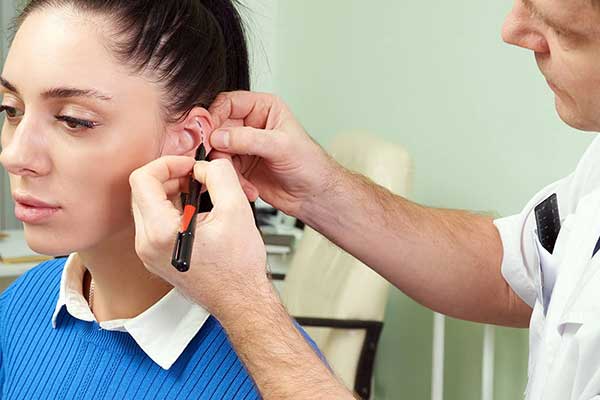Otoplasty Recovery Time: What to Expect After Ear Surgery
Introduction otoplasty recovery time
Undergoing otoplasty, commonly known as ear surgery, can be a life-changing decision for individuals who are unhappy with the appearance of their ears.
Whether it’s to correct prominent ears, reshape earlobes, or address other cosmetic concerns, otoplasty offers a solution. However, it’s important to understand the recovery process to ensure optimal results and a smooth healing journey.
In this article, we will delve into the topic of otoplasty recovery time and provide valuable insights into what to expect after the procedure.
Table of Contents
- Understanding Otoplasty: An Overview
- Preparing for Otoplasty: The Importance of Planning
- The Otoplasty Procedure: What Happens in the Operating Room
- Immediate Post-Surgery: The Initial Stage of Recovery
- First Few Days After Otoplasty: Managing Discomfort and Swelling
- Weeks 1-2: The Healing Process Takes Shape
- Weeks 3-6: Continued Recovery and Follow-up Visits
- Resuming Normal Activities: When Can You Return to Your Routine?
- Potential Complications: Recognizing Signs of Trouble
- Results and Long-Term Satisfaction: What to Expect
- Frequently Asked Questions (FAQs)
- Conclusion
1. Understanding Otoplasty: An Overview
Otoplasty is a surgical procedure performed to alter the shape, size, or position of the ears. It can address various concerns such as prominent ears, asymmetry, or misshapen earlobes. The surgery involves reshaping the cartilage and, if necessary, removing excess skin. Otoplasty is typically performed under local anesthesia and may take a few hours, depending on the complexity of the case.
2. Preparing for Otoplasty: The Importance of Planning
Before undergoing otoplasty, thorough preparation is essential. This includes consulting with a qualified plastic surgeon who specializes in ear surgery. During the consultation, the surgeon will evaluate your ears, discuss your expectations, and provide detailed instructions for pre-operative care. It is crucial to follow these guidelines to minimize the risk of complications and optimize your recovery.
3. The Otoplasty Procedure: What Happens in the Operating Room
On the day of the surgery, you will be given anesthesia to ensure your comfort throughout the procedure. The surgeon will make incisions behind the ears, carefully reshaping the cartilage and securing it in the desired position. If needed, excess skin may be removed. The incisions will then be closed with sutures, which may be absorbable or require removal at a later stage.
4. Immediate Post-Surgery: The Initial Stage of Recovery
After otoplasty, you will be moved to a recovery area, where medical professionals will monitor your condition. It is common to experience mild discomfort, swelling, and bruising during the initial hours following the surgery. The surgical site will be covered with a dressing or bandage to protect it and aid in the healing process.
5. First Few Days After Otoplasty: Managing Discomfort and Swelling
During the first few days, it is essential to take proper care of your ears to promote healing and minimize discomfort. Your surgeon will provide specific instructions on how to clean and care for the surgical site. It is normal to experience swelling and bruising, which will gradually subside over time. Pain medication prescribed by your surgeon can help manage any discomfort.
6. Weeks 1-2: The Healing Process Takes Shape
As the weeks progress, you will notice significant improvement in the appearance of your ears. Swelling will continue to subside, and any residual bruising will fade. Your surgeon may recommend wearing a headband or special dressing to support your ears during this period. Follow-up appointments will be scheduled to monitor your progress and ensure proper healing.
7. Weeks 3-6: Continued Recovery and Follow-up Visits
During this phase, the majority of swelling should have subsided, and your ears will begin to settle into their new shape. Follow-up visits with your surgeon will help assess your healing progress and address any concerns. It is essential to follow the post-operative instructions provided by your surgeon to achieve optimal results.
8. Resuming Normal Activities: When Can You Return to Your Routine?
The timing for resuming normal activities varies from patient to patient. Generally, it is advisable to avoid strenuous activities, contact sports, and exposure to excessive heat or sunlight during the first few weeks of recovery. Your surgeon will provide specific guidelines on when you can safely resume exercise, wear earrings, or engage in activities that may impact your ears.
9. Potential Complications: Recognizing Signs of Trouble
While otoplasty is considered safe and effective, like any surgical procedure, it carries some risks. It is crucial to be aware of potential complications and promptly seek medical attention if any arise. Complications may include infection, bleeding, excessive scarring, or poor wound healing. By closely following your surgeon’s instructions and attending follow-up appointments, you can minimize the risk of complications.
10. Results and Long-Term Satisfaction: What to Expect
As the final results of otoplasty become evident, most patients experience a significant improvement in the appearance of their ears. Your surgeon’s skill and expertise play a crucial role in achieving the desired outcome. It is important to have realistic expectations and understand that individual healing varies. By following post-operative care instructions and maintaining regular follow-up visits, you can enhance the longevity of your results.
11. Frequently Asked Questions otoplasty recovery time
Q1: How long does otoplasty recovery take? The complete recovery from otoplasty typically takes several weeks to a few months. However, the majority of swelling and discomfort subsides within the first few weeks.
Q2: Will otoplasty leave visible scars? The incisions made during otoplasty are strategically placed behind the ears, making them minimally visible. With proper care and adherence to post-operative instructions, scars tend to fade over time.
Q3: Is otoplasty a painful procedure? Otoplasty is performed under anesthesia, ensuring a painless experience during the surgery itself. After the procedure, mild to moderate discomfort can be managed with prescribed pain medication.
Q4: Can otoplasty be performed on adults? Yes, otoplasty can be performed on adults who wish to enhance the appearance of their ears. It is essential to consult with a qualified plastic surgeon to determine if you are a suitable candidate.
Q5: Are the results of otoplasty permanent? The results of otoplasty are considered long-lasting. However, factors such as aging and significant weight fluctuations may affect the appearance of the ears over time.
12. Conclusion otoplasty recovery time
Otoplasty offers individuals the opportunity to transform the appearance of their ears and boost their self-confidence. By understanding the otoplasty recovery time and following post-operative care instructions, you can ensure a successful healing process and achieve the desired results.
Remember to consult with a skilled plastic surgeon who specializes in otoplasty to discuss your goals, address any concerns, and embark on a journey to renewed self-assurance.

